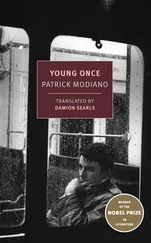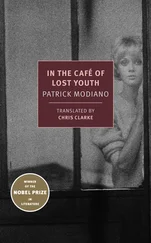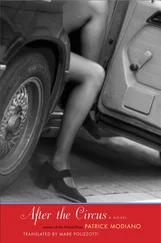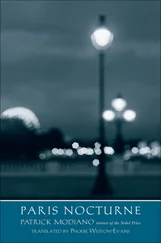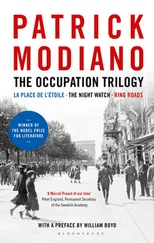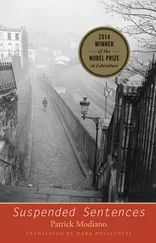In the end, he decided to take advantage of the silence of the night to reread all the pages of the “dossier” for one last time. But no sooner had he started his reading than he experienced an unpleasant sensation: the sentences became muddled and other sentences suddenly appeared that overlaid the previous ones and disappeared without giving him time to decipher them. He was confronted with a palimpsest in which all the various writings were jumbled together and superimposed, and moved about like bacilli seen through a microscope. He put this down to weariness, and he closed his eyes.
When he opened them again, he came across the photocopy of the passage in Le Noir de l’été in which the name of Guy Torstel was mentioned. Apart from the episode of the Photomaton shop — an episode he had stolen from real life — he had not the slightest memory of his first book. The only one he retained was that of the first twenty pages which he had later suppressed. In his mind’s eye, they were to have been the beginning of the book before he abandoned it. He had visualised a title for this first chapter: “Return to Saint-Leu-la-Forêt”. Were these twenty pages still hibernating in a cardboard box or an old suitcase? Or had he torn them up? He no longer knew.
Before writing them, he had wanted to travel for one last time, after fifteen years, to Saint-Leu-la-Forêt. It was not so much a pilgrimage, but rather a visit that would help him write the beginning of the book. And he had not mentioned this “return to Saint-Leu-la-Forêt” to Annie Astrand a few months later, on the evening he had seen her again after the book had been published. He was frightened that she might shrug and say to him: “But what a strange idea, Jean dear, to go back there. .”
So, one afternoon, a few days after having met Torstel at the racecourse, he had taken a bus to Porte d’Asnieres. The suburb had already changed a good deal at that time. Was it the same route that Annie Astrand had taken when she came back by car from Paris? The bus passed under the railway track near Ermont station. And yet he now wondered whether he had not dreamt this journey, which had taken place over forty years ago. It was probably the fact that he had made it a chapter of his novel that induced such confusion in him. He had walked up Saint-Leu’s main street and crossed the square with the fountain. . A yellow mist hovered and he wondered whether it did not come from the forest. On rue de l’Ermitage, he was sure that the majority of the houses had not yet been built in Annie Astrand’s time and that in their place there had been trees, on either side, the canopies of which formed an archway. Was he really in Saint-Leu? He thought he recognised the part of the house that gave onto the street and the large porch beneath which Annie often parked her car. But, further along, the surrounding wall had vanished and a long, concrete building replaced it.
Opposite, protected by a metal gate, was a single-storey house with a bow window and a frontage covered in ivy. A copper plate on the gate: “DR LOUIS VOUSTRAAT”. He remembered that after school one morning Annie had taken him to this doctor, and that one evening the doctor himself had come to the house to see him in his bedroom because he was ill.
He hesitated for a moment, there, in the middle of the street, then he made up his mind. He pushed open the gate which gave onto a small garden and he walked up the stone steps. He rang the bell, and waited. Through the half-open door, he saw a tall man, his white hair cut short, with blue eyes. He did not recognise him.
“Doctor Voustraat?”
The man gave a start of surprise, as though Daragane had just roused him from his slumber.
“There is no surgery today.”
“I merely wanted to talk to you.”
“What about, monsieur?”
Nothing suspicious about this question. His tone was friendly and there was something reassuring about his voice.
“I’m writing a book about Saint-Leu-la-Forêt. . I wanted to ask you a few questions.”
Daragane felt so nervous that he thought he might have spoken this sentence with a stutter. The man gazed at him with a smile.
“Come in, monsieur.”
He led him into a drawing room where a fire was burning in the grate and directed him to an armchair opposite the bow window. He sat down beside him in a similar armchair that was covered in the same tartan material.
“And who gave you the notion of coming to see me, in particular?”
His voice was so solemn and gentle that, within a very short time, he could have extracted confessions from the wiliest and most hardened criminal. At least that was what Daragane imagined.
“Passing by, I saw your plate. And I said to myself that a doctor knows the place where he practises very well. .”
He had tried to speak clearly, in spite of his awkwardness, and he had only just managed to use the word “place” instead of “village”, which was the one that had automatically come to mind. But Saint-Leu-la-Forêt was no longer the village of his childhood.
“You are not mistaken. I’ve been practising here for twenty-five years.”
He stood up and walked over to a shelf on which Daragane noticed a box of liqueurs.
“Will you drink something? A little port?”
He handed the glass to Daragane and sat down again, beside him, in the tartan-covered armchair.
“And you are writing a book about Saint-Leu? What a good idea. .”
“Oh. . a pamphlet. . for a series on the different areas of Ile-de-France. .”
He searched for other details that would inspire this Dr Voustraat with confidence.
“For example, I’m devoting a chapter to the mysterious death of the last Prince de Condé.”
“I can see that you are well acquainted with the history of our little town.”
And Dr Voustraat stared at him with his blue eyes and smiled at him, as he had done fifteen years ago when he had listened to his chest in his bedroom in the house opposite. Was it for a bout of flu or for one of those childhood illnesses with such complicated names?
“I shall need other information that may not be historical,” said Daragane. “Some anecdotes, for example, concerning certain inhabitants of the town. .”
He astonished himself at having been able to complete a sentence of such length, and with confidence.
Dr Voustraat appeared thoughtful, his eyes focused on a log that was burning gently in the grate.
“We have had artists at Saint-Leu,” he said as he nodded, looking as though he were jogging his memory. “The pianist Wanda Landowska. . And also the poet Olivier Larronde. .”
“Would you mind if I made a note of the names?” Daragane asked.
From one of his coat pockets he took out a ballpoint pen and the black moleskin notebook that he always kept with him since he had begun his book. In it, he jotted down snatches of sentences, or possible titles for his novel. With great care, he wrote, in capital letters: WANDA LANDOWSKA. OLIVIER LARRONDE. He wanted to show Dr Voustraat that he had scholarly habits.
“Thank you for your information.”
“Other names will certainly occur to me. .”
“It’s very kind of you,” said Daragane. “Would you, by any chance, remember a news item that is supposed to have occured at Saint-Leu-la-Forêt?”
“A news item?”
Dr Voustraat was evidently surprised by this word.
“Not a crime, of course. . But something shady that may have happened around here. . I was told about a house, just opposite yours, where some strange people lived. .”
There, he had cut to the heart of the matter, in a much quicker way than he had anticipated.
Dr Voustraat’s blue eyes stared at him again and Daragane sensed a certain mistrust in his gaze.
“Which house opposite?”
Читать дальше


